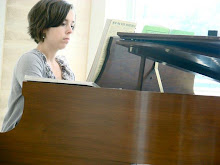Most everything in Papillons is a dance. All movements are in three except for number 2 and a brief part of the finale. What is interesting to me is how Schumann is able to transform characters and maintain interest while remaining in triple meter. And of course this all happens while simultaneously portraying the story in Jean-Paul Richter's novel.
The brief introduction appropriately sets the scene at the ball, followed by a dreamy waltz presented in the first movement. The boot appears in #3, but here triple meter is no longer a dance. It comes as close to a march as possible without actually being in two. I like the canonic use of the boot's theme at the end of. We return back to dance music in the fourth piece, but it is not a waltz. It sounds to me like some kind of elfin ballet instead. The music in #5 sounds like a fairytale dream, as Walt notices the maiden (whose name is Wina) for the first time. This dance is similar to a Polonaise perhaps? In #7 Vult pleads with his brother Walt to switch costumes with him. What Walt doesn't know is that Vult is planning to use his costume to win over the lovely Wina. Through Schumann's use of tone and character, I think this sense of pleading is created effectively. (The deceptive resolution in the fourth measure is particularly helpful here). Vult's charm wins his brother's consent, and they exchange costumes. As soon as Vult gets Walt's costume on, he immediately begins making fun of his brother's dancing! (#8). The music here is kind of awkward and sideways, yet still in triple meter. The brothers get into an argument, the anger of which arises in movement 9. Vult, who is a much more competent dancer than Walt, starts dancing with Wina in #10. The waltz here, grand and classy, creates an image of Vult swiftly moving Wina across the dance floor. The 11th movement is like a polonaise and trio, and it frequently changes direction, depicting all different kinds of people with all different dancing abilities. The grandfather's dance appears in the finale (reused in Carnaval, as we all so famously know), and it is at one point presented simultaneously with the previously heard waltz - very Schumannesque. At the end, I like how memories of the evening are evoked in a dream-like state.
Friday, January 11, 2008
Subscribe to:
Comments (Atom)
